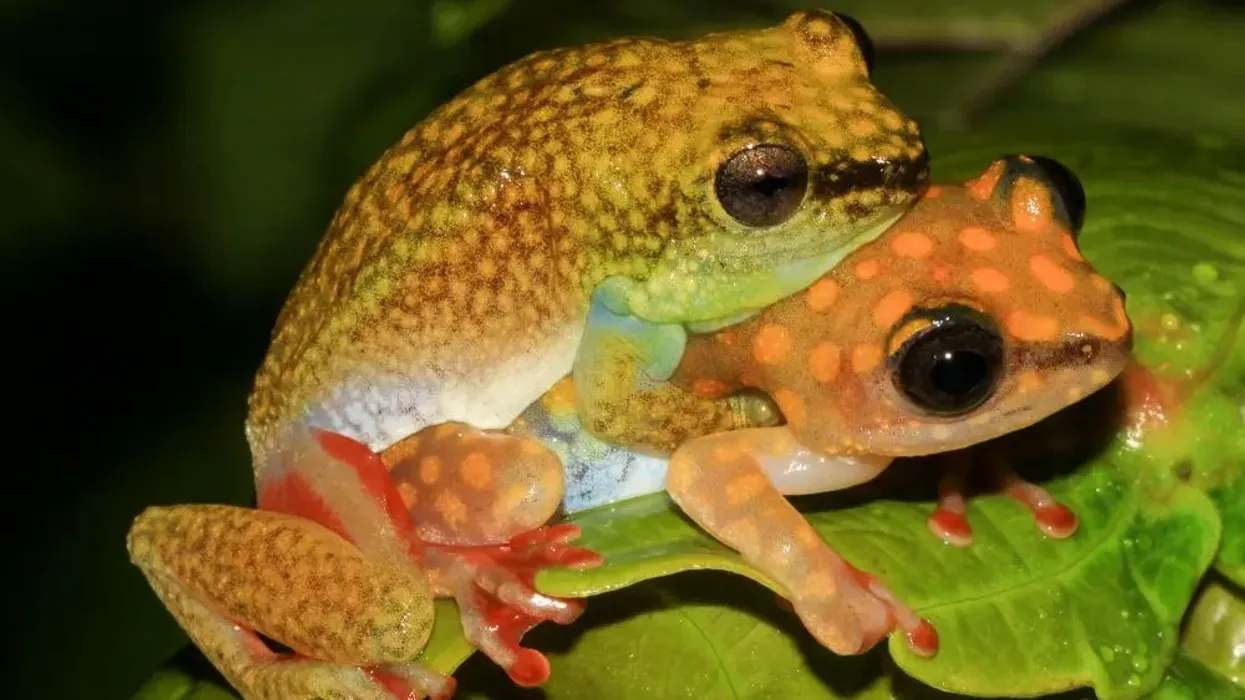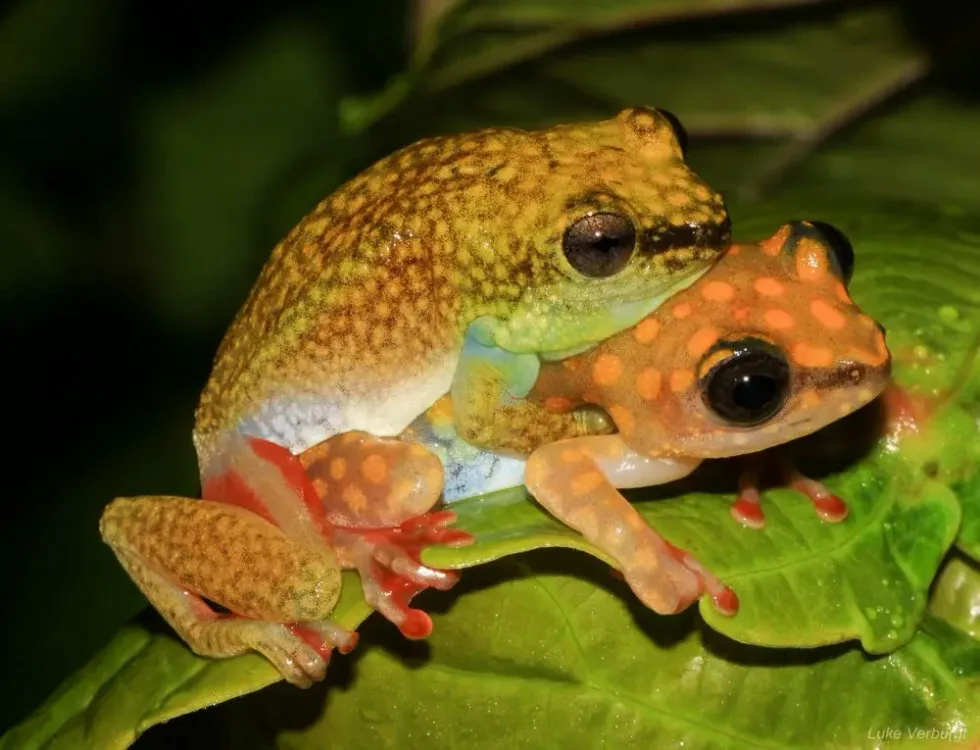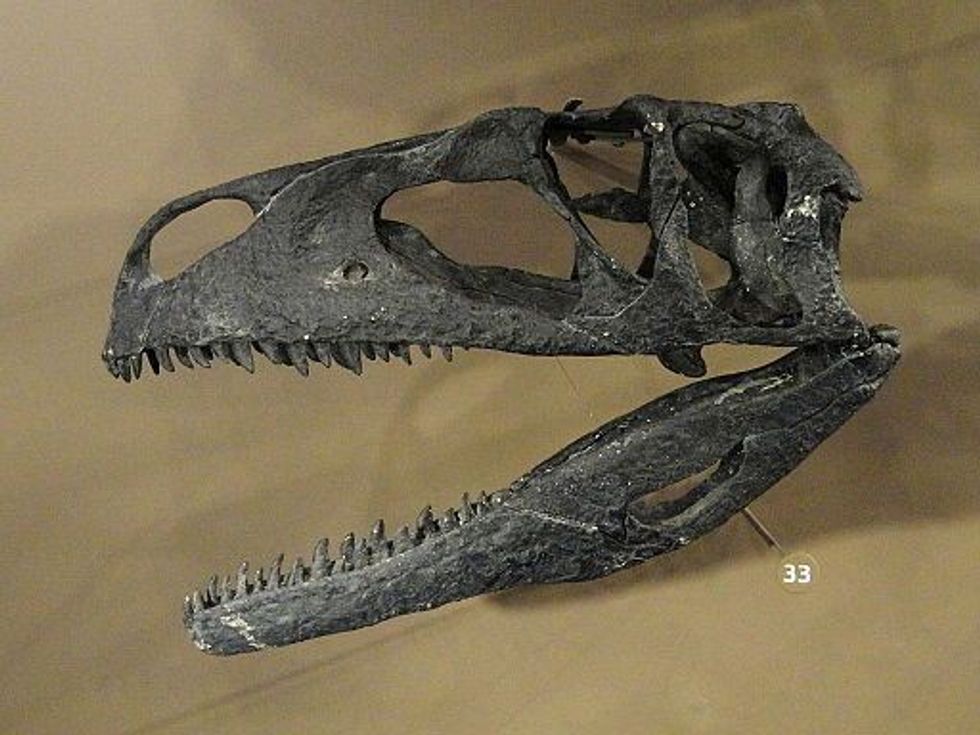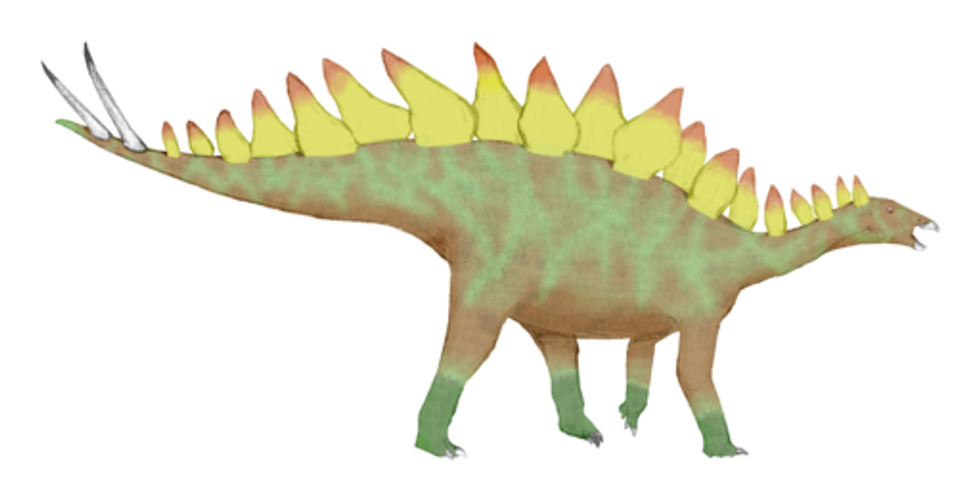The Hyperoliidae is a very large family housing more than 200 frog species widely distributed in about 19 genera. The frogs of this group have small to medium bodies, but are well remarkable with the diversity of striking brightly colored bodies.
The various genera under this family are Acanthixalus, Afrixalus, Alexteroon, Arlequinus, Callixalus, Chrysobatrachus, Cryptothylax, Heterixalus, Hyperolius, Kassina, Kassinula, Morerella, Opisthothylax, Paracassina, Phlyctimantis, Semnodactylus and Tachycnemis.
These frogs find their home in the sub-Saharan Africa, Madagascar lands and even the Seychelles Islands. Alternate names for these frogs are bush frogs, or sedge frogs. A diversity of bheaviour is observed in these hyperoliids, with most hyperoliids being arboreal, while some being terrestrial as well.
For more relatable content, check out these Chinese giant salamander facts and poison frog facts for kids.
Hyperoliidae Interesting Facts
What type of animal is a Hyperoliidae?
The Hyperoliidae is a large family of colorful frogs.
What class of animal does a Hyperoliidae belong to?
Bush frogs belong to the class of amphibians.
How many Hyperoliidaes are there in the world?
There are more than 250 species of sedge frogs, which fall under 19 different genera.
Where does a Hyperoliidae live?
17 genera are native to the regions of sub-Saharan Africa. Of the remaining two, one of the species is entirely endemic to Madagascar, while the other is found on the Seychelles Islands.
What is a Hyperoliidae's habitat?
With so many species under it, we cannot generalize the Hyperoliidae habitat. However, most of them are found living in forests and savannas.
Who do Hyperoliidaes live with?
We are not aware of this information for all frogs. However, few species like the African reed frogs are known to enjoy a solitary life.
How long does a Hyperoliidae live?
Sorry, we are not aware of the lifespan of the sedge frogs in this family!
How do they reproduce?
At the beginning of the rainy season, these brightly colored frogs begin their breeding activities. The hyperoliids all come and gather around at their breeding sites.
Usually, most of the species of this family lay their eggs in water. However, alternate methods of egg-laying are also adopted.
Some species, like the Acanthixalus genus, prefer tree-hole breeding, some prefer foam nesting like the Opisthothylax, while some species, such as the Leptopelis, would lay their eggs in the vegetation surrounding these water bodies. Hyperoliids of genus Afrixalus have a peculiar way of nesting - they build small leaf nests for the safety of their eggs!
This is done by carefully folding the leaves, ensuring it does not crack open, and then gluing together the edges of the leaves. This sticky substance is derived from the oviducal secretions of the amphibians.
Tadpoles which hatch from the eggs are the pond-type larvae. They possess large dorsal fins placed at the posterior side of their bodies.
What is their conservation status?
About 150 species have their conservation status listed as 'Least Concern, about 20 species are 'Vulnerable', about 20 species are 'Endangered', and less than 10 species are listed as 'Near Threatened' and 'Critically Endangered'. About 30 species have been labeled as 'Data Deficient'.
Hyperoliidae Fun Facts
What do Hyperoliidaes look like?
The most striking features of the bush frogs are their vibrant, colorful bodies. Almost all frogs have bright colors on their skins. The frogs of the family Hyperoliidae are either small or medium-sized. Their skin appears really smooth and bright, with different patterns on their skin which looks almost enameled.
Talking about a few particular genera, frogs of the Acanthixalus genus have almost similar sizes for both male and female frogs. However, males possess a pair of gular glands. They have multiple tarsal spines and even have large discs on both toes and fingers.
Genus Alexteroon have more flat-bodied species. They have translucent bellies. Their bodies are well camouflaged with the greenery of their habitat, being in shades of green to brown. The patterns on their bodies change diurnally.
Members of the Callixalus genus have multiple yellow or orange spots on their bodies. Their dorsums are warty, and in hues ranging from dark brown to black.
Opisthothylax genus frogs usually show two occipital spots. The dorsal region of these frogs ranges between yellow, orange and red-brown. The limbs, iris and ventral surfaces are of light yellow hue. Tympanum is not visible, and their skins are warty.

How cute are they?
Cute is not the exact word we would like to descrive the members of the family Hyperoliidae. But they are actually beautiful!
How do they communicate?
Some species of these medium-sized frog group are said to be mute. However, frogs in general and known to croak and communicate with each other.
How big is a Hyperoliidae?
Frogs coming under the this group have their body length ranging between 0.5-3.54 in (1.27-9 cm). This makes them almost 3 times the size of glow-worms.
How fast can a Hyperoliidae move?
Uh oh, we do not know how fast the hyperoliinae species can move.
How much does a Hyperoliidae weigh?
Though we are not aware of the exact weights, we can say that they weigh just a few ounces.
What are the male and female names of the species?
There are no names entitled for the male and female frogs of the family Hyperoliidae.
What would you call a baby Hyperoliidae?
With such a vast family comprising mainly of frogs, a baby frog is usually called a froglet.
What do they eat?
Their diet is mainly carnivorous. Various frogs feast on different prey. Frogs of the Paracassina genus are known to feast on snails. Acanthixalus species are known to eat arthropods like grass spiders, millipedes, centipedes, mites, and other worms. Kassina frogs also like munching on mealworms and crickets.
Afrixalus fornasini is said to be the only terrestrial Hyperoliidae member to prey on the eggs of other frogs.
Are they poisonous?
It is believed that the African reed frogs have toxic, poisonous skin.
Would they make a good pet?
Frogs of the genera Kassina, Hetrixalus, Hyperolius and a few others are said to be kept as pets.
Did you know...
The various genera under this family are listed below.
Acanthixalus: also known as the African wart frogs, they are found in Middle and Western Africa. There are only 2 frog species under this genus.
Afrixalus: commonly known as banana frogs, genus Afrixalus houses about 35 different hyperoliids.
Alexteroon: midwife/egg-guarding frogs have 3 species under it.
Arlequinus: only one frog, ,the Mebebque frog come under this genus. They have been tagged as 'Endangered',
Callixalus: only one species, the African painted frog, is a part of this genus.
Chrysobatrachus: there is only one species, the Itombwe golden frog, which is native to the Itombwe Mountains.
Cryptothylax: also known as wax frogs, there are two species under this genus.
Heterixalus: alternatively called as Madagascar reed frogs, the 11 species of the Heterixalus genus are entirely endemic to lands of Madagascar.
Hyperolius: African reed frogs or genus Hyperolius comprise of 145 species of frogs.
Kassina: 15 terrestrial species of genus Kassina are also known as running frogs.
Kassinula: this genus is monotypic, and are commonly known as clicking frogs.
Morerella: there is only one species of hyperoliids in this genus.
Opisthothylax: popular as the 'grey-eyed frog', this genus is the home to just one species.
Paracassina: the two species of this genus are also known as common striped frogs.
Phlyctimantis: African striped frogs are widely spread into 5 species.
Semnodactylus: Weal's frogs is the only frog in this genus.
Tachycnemis: Seychelles Islands frogs are the only type under this genus.
There have been debates on the number of species in the genus Hyperolius. Some claim only 145 hyperoliids species under this, while some claim 153.
Frogs of Afrixalus group are also known as leaf-folding frogs, spiny reed frogs and cat's eye reed frogs. They are known to lay their eggs in folded leaves for safety.
Hyperoliids of genus Kassina are said to 'walk' with their hind legs, rather than hopping around.
How are they different from other species of their family
The Hyperoliidae belong to the superfamily of Ranoidea, which come in the order Anura. What makes the members of Ranoidea different is that they are known to have no ribs present in the body. They have a pectoral girdle which is fused altogether in a single unit.
Do Hyperoliidaes bite?
Many species of this frog family is known to not have teeth. Though we are not aware if bush frogs bite, this family is said to have mostly peaceful frog members.
For more relatable content, check out these olm facts and pool frog facts pages.
You can even occupy yourself at home by coloring in one of our free printable Hyperoliidae coloring pages.









